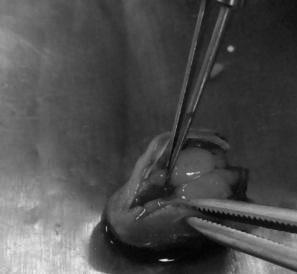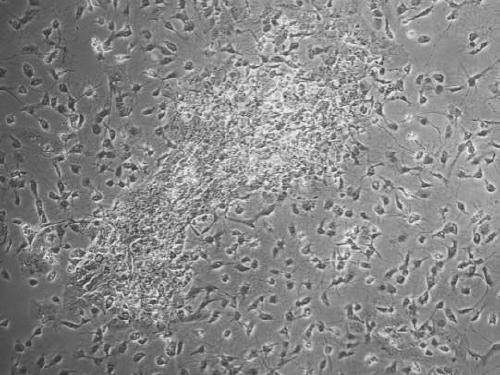Method for separating and culturing olfactory ensheathing cells of mice
A technology for the separation and cultivation of olfactory ensheathing cells, which is applied in the field of medicine and biology, can solve the problems of weak biological activity and low density per unit area of olfactory ensheathing cells, and achieve axon extension promotion effect, fast cell proliferation, and large number Effect
- Summary
- Abstract
- Description
- Claims
- Application Information
AI Technical Summary
Problems solved by technology
Method used
Image
Examples
Embodiment Construction
[0022] In order to make the object, technical solution and advantages of the present invention clearer, the following examples further describe the present invention in detail. It should be understood that the specific embodiments described here are only used to explain the present invention, not to limit the present invention.
[0023] Materials and equipment used in the experiment of the present invention include: P75 mouse monoclonal antibody and GFAP mouse monoclonal antibody were purchased from Abcam Company in the United Kingdom; fetal bovine serum was purchased from CLARK Company in the United States, and DF12 medium was purchased from Hyclone Company in the United States. The system was purchased from Nikon, Japan, and the carbon dioxide incubator was purchased from Thermo, USA. The complete medium used in the test process of the present invention is DF12 medium, and the complete medium containing fetal bovine serum is: DF12 medium containing 15% fetal bovine serum.
...
PUM
 Login to View More
Login to View More Abstract
Description
Claims
Application Information
 Login to View More
Login to View More - R&D
- Intellectual Property
- Life Sciences
- Materials
- Tech Scout
- Unparalleled Data Quality
- Higher Quality Content
- 60% Fewer Hallucinations
Browse by: Latest US Patents, China's latest patents, Technical Efficacy Thesaurus, Application Domain, Technology Topic, Popular Technical Reports.
© 2025 PatSnap. All rights reserved.Legal|Privacy policy|Modern Slavery Act Transparency Statement|Sitemap|About US| Contact US: help@patsnap.com



